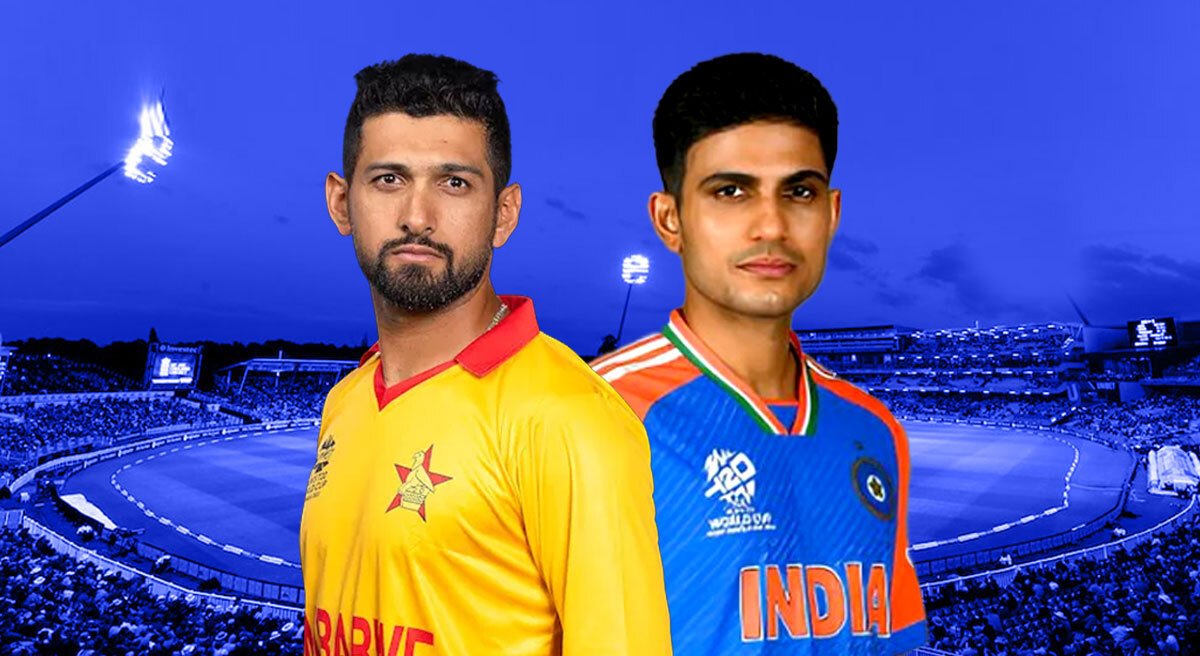Cricket, one of the most followed sports worldwide, has witnessed numerous thrilling rivalries, one of them being between Zimbabwe and India. Although India has historically been the stronger side, the clashes between the Zimbabwe National Cricket Team and the India National Cricket Team have produced memorable moments and fascinating matches. This article explores their encounters and how their rivalry has evolved over the years.
The Early Encounters: 1980s
The story of Zimbabwe's cricket rivalry with India began after Zimbabwe’s international cricket debut in 1983. Zimbabwe, at the time, was a newly independent nation with a relatively young cricket team. Their first major encounter with India occurred in the 1983 ICC Cricket World Cup held in England. This match is particularly iconic for Indian cricket fans, as it featured one of the most famous performances in Indian cricket history. India, on the brink of elimination, was rescued by captain Kapil Dev’s heroic knock of 175*, which helped India recover from 17-5 and eventually win the match. India went on to win the World Cup, while Zimbabwe gained admiration for their competitive spirit despite their early tournament exit.
For Zimbabwe, this match marked their first major encounter with a cricketing powerhouse like India, and although they lost, the performance became part of their learning curve on the international stage.
The 1990s: Rise of Competitive Matches
The 1990s saw the Zimbabwean cricket team starting to establish itself as a competitive side. In 1992, Zimbabwe was granted Test status, marking a significant milestone for the country’s cricket ambitions. The next few years saw several one-day international (ODI) and Test series between India and Zimbabwe.
One of the most notable encounters came in 1997 when Zimbabwe toured India. Zimbabwe secured a historic ODI win against India in the Pepsi Triangular Series in 1997, stunning the cricketing world by successfully chasing down 240 runs. Andy Flower and Alistair Campbell were standout performers for Zimbabwe, signaling that the nation could now hold its own against major cricketing teams. The victory showed that Zimbabwe was no longer a pushover and could challenge India on a competitive level.
In Test cricket, however, Zimbabwe found India a tough competitor. In their first-ever Test series against India in 1992-93, Zimbabwe showed promise but struggled against India’s bowling attack, led by spinners like Anil Kumble. Despite a series loss, Zimbabwe’s ability to compete in the longest format of the game improved during this period.
The Early 2000s: Zimbabwe’s Strongest Era
The early 2000s marked the golden period of Zimbabwean cricket, with stars like Andy Flower, Grant Flower, Heath Streak, and Henry Olonga forming the backbone of the team. This era also saw several thrilling matches between Zimbabwe and India.
In the 2002 ICC Champions Trophy, Zimbabwe nearly pulled off a major upset against India. India batted first and posted a competitive total, but Zimbabwe’s batsmen, led by Andy Flower, came dangerously close to chasing the target, only to fall short by a mere 14 runs. Despite the loss, Zimbabwe's performance was seen as a testament to their growing ability to challenge stronger teams like India.
One of the more notable achievements for Zimbabwe came in the 2001 Coca-Cola Cup in Sharjah when they defeated India in an ODI match. Zimbabwe posted a total of 274 and restricted India to 232, registering a 42-run win. This win remains one of Zimbabwe’s most remarkable achievements in their cricket rivalry with India.
Mid-2000s to 2010s: A Struggling Zimbabwe
Following the political and economic turmoil in Zimbabwe in the mid-2000s, the country’s cricket fortunes declined. Many of their star players, including the Flower brothers and Heath Streak, either retired or left international cricket. As a result, the team struggled to maintain the level of competitiveness they had achieved in the early 2000s.
During this period, India dominated the matches between the two sides. Zimbabwe’s weakened team was no match for the likes of India’s emerging stars such as Virender Sehwag, Yuvraj Singh, and Mahendra Singh Dhoni. India continued to win both Test and ODI series with considerable ease, with Zimbabwe often finding themselves outclassed.
The 2010s and 2020s: Rebuilding and Sporadic Upsets
Despite a difficult period, Zimbabwe has shown glimpses of their potential. One of the most surprising upsets came during India’s tour of Zimbabwe in 2010, when the hosts defeated India by 6 wickets in the first ODI. Zimbabwe chased down 286 runs, thanks to strong performances from Brendan Taylor and Hamilton Masakadza. This win reminded the cricketing world that Zimbabwe still had the ability to pull off surprise victories.
In recent years, India’s dominance over Zimbabwe has continued, but Zimbabwe has focused on rebuilding its cricketing structure. The young generation of players like Sikandar Raza and Sean Williams have occasionally troubled India, though India has largely maintained the upper hand in their encounters.
Key Matches Timeline
1. 1983 World Cup: India vs. Zimbabwe (Kapil Dev’s 175* saves India)
2. 1997 Pepsi Triangular Series: Zimbabwe stuns India in an ODI
3. 2001 Coca-Cola Cup: Zimbabwe defeats India by 42 runs in Sharjah
4. 2010 ODI Series: Zimbabwe surprises India with a 6-wicket victory
Conclusion
The rivalry between Zimbabwe and India, though one-sided in India’s favor, has produced thrilling moments that highlight the unpredictability of cricket. Zimbabwe, despite their challenges, has had several occasions where they proved their mettle against the Indian team. With the recent emergence of younger talents, Zimbabwe continues to aim for future upsets, while India maintains its status as a cricketing powerhouse.
Categories: Sports
